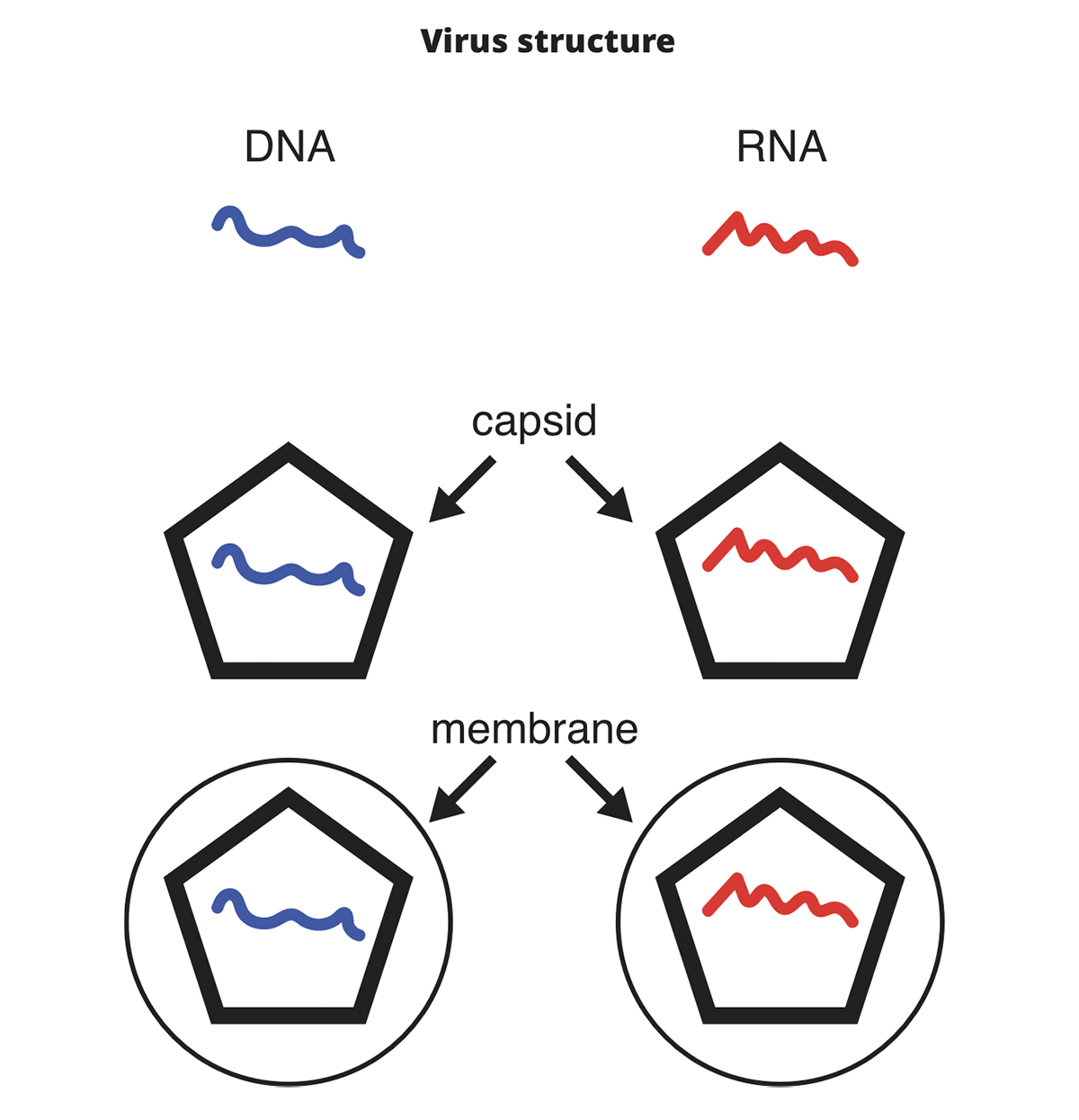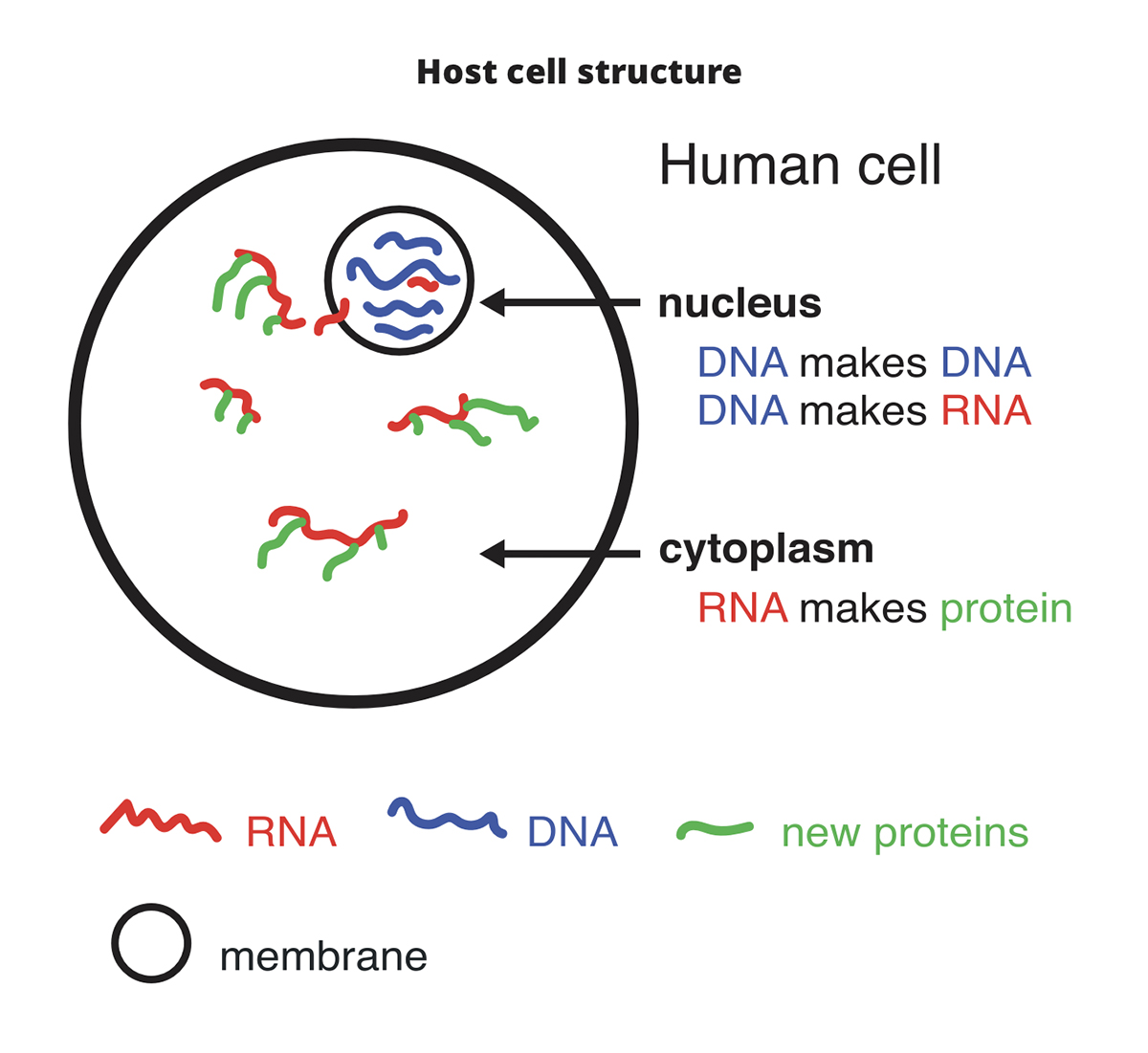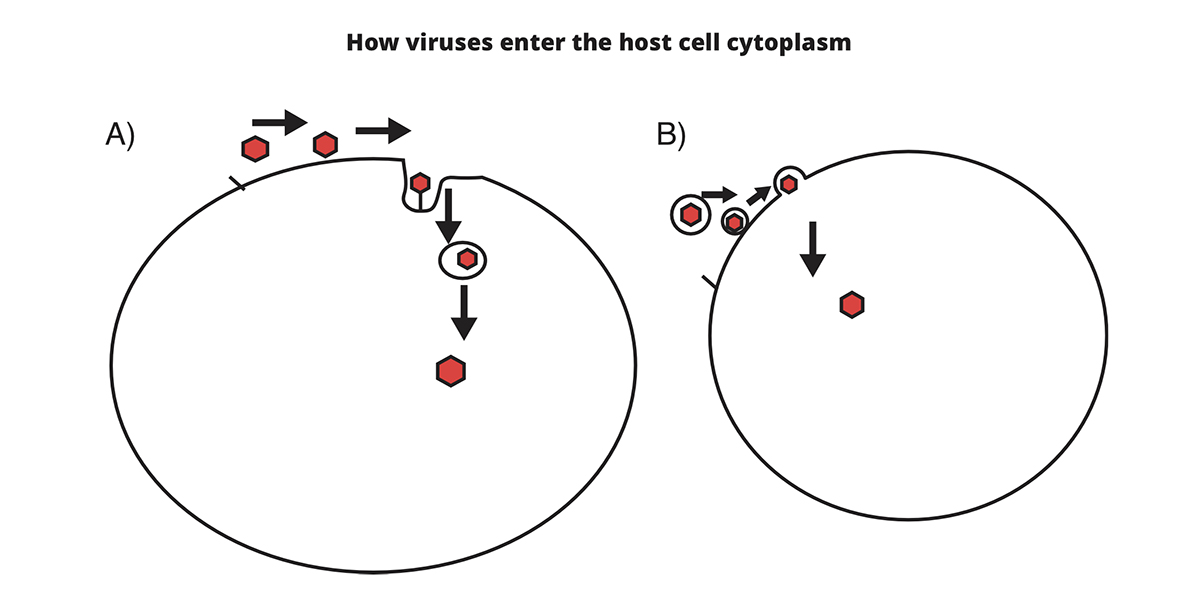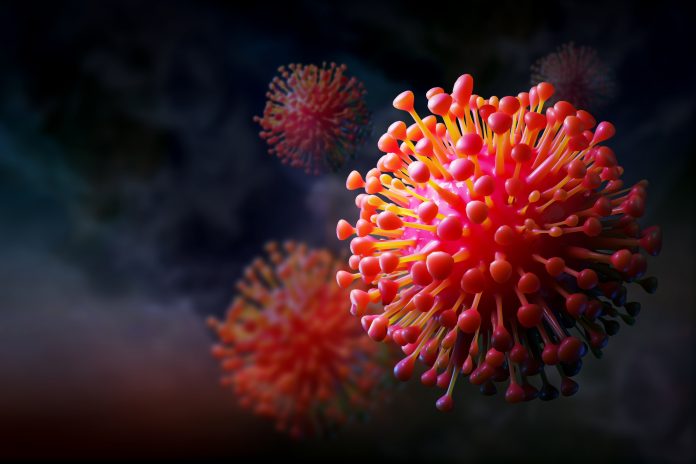Ann Matthysse, Department of Biology, University of North Carolina, explores what exactly a virus is, with a specific focus on RNA viruses and SARS-CoV-2
Since the beginning of the COVID-19 pandemic, almost everyone has heard of viruses. Viruses are very small. Most of them can’t even be seen in a light microscope. They can’t live on their own. They are obligate parasites which means that they can only grow as a parasite in another organism.
All living things can be infected by viruses including people, other mammals such as dogs or cows, fish, worms, plants, fungi, and even bacteria. There are many kinds of viruses and each one generally only infects a few related species of organisms. However, any particular species can be infected by many different viruses. For example, humans can be infected by measles, chickenpox, polio, influenza, and SARS-CoV-2 viruses as well as other viruses.
The structure of a virus
A virus is basically a piece (or pieces) of nucleic acid (either RNA or DNA). The nucleic acid carries the information for making more virus particles when it is read inside an infected cell. Nucleic acid is not very stable out in the world by itself. In viruses, the nucleic acid is enclosed in a protein coat called a capsid. This can be made of a single type of protein or many types of proteins organised into a complex structure. Some viruses such as herpes, influenza and SARS-CoV-2 have a membrane around the capsid. This membrane is not made by the virus; it is obtained from the host cell. The basics of virus structure are shown in Figure 1.

How a virus grows
Viruses do not contain everything they need to grow. They cannot make membranes. They cannot obtain energy from compounds like sugar. They cannot make proteins. For all these things they are dependent on their host cell. DNA viruses, if they grow in the nucleus, can use the host cell machinery to copy their DNA into new strands for new virus particles. They can also use the host cell machinery to make RNA which can be used to make proteins in the cytoplasm. The virus is then put together with the capsid proteins surrounding the DNA. If the virus is surrounded by a membrane, it obtains the membrane from one of the host cell membranes, often it becomes surrounded by the cell membrane as it leaves the host cell. The basic structure of a host cell is shown in figure 2.
RNA viruses must carry the genes for the proteins they need to copy their RNA to make new viruses. The host cell does not use RNA as a template (pattern guide) to make RNA. (Host cell RNA is made using DNA as the template and when the RNA has been used it is degraded. RNA viruses use the host cell protein synthesis machinery to make their capsid proteins and the proteins needed to copy RNA into RNA. However, RNA viruses have the problem that the host cell only makes one protein from a piece of RNA. Thus, the virus must contain several pieces of RNA, one for each protein it needs, or use some other mechanism to make several proteins from one piece of RNA. Influenza virus has 8 pieces of RNA, each one encoding a different protein. These include the surface proteins hemagglutinin (H) and neuraminidase (N) and the proteins to copy an RNA sequence to make a new viral RNA piece.

Some RNA viruses, for example, polio, yellow fever, and Ebola contain only one piece of RNA. They still must make several proteins in order to make new virus particles. These new proteins include the capsid proteins and the proteins to copy the viral RNA and make new viral RNA molecules. Since these viruses have only one piece of RNA, they make only one large protein using the host cells protein synthesis apparatus. This protein contains some sequences which even when part of the large protein can split that protein into several smaller proteins. The smaller proteins include the proteins required to make new viral RNA molecules and the capsid proteins.
A second way in which a virus can make several proteins from one piece of RNA is to use the single piece of RNA to make a protein that copies the RNA into several smaller pieces of RNA. Each of these smaller pieces of RNA can then be used to make one protein. Tobacco mosaic virus (TMV) is a virus that grows in the host cell in this way.
Corona viruses including SARS-CoV-2 which causes covid-19 use a combination of these two mechanisms. They make a single large protein from the first part of their RNA and then split the large protein into several smaller proteins. Some of these make smaller RNAs from the second part of the viral RNA and these are used to make more virus proteins including the spike protein on the surface of the virus.
How a virus gets into a cell
For a virus to grow, it must get inside a cell. Viruses generally recognise a structure on the surface of the host cell and bind to this structure. The virus protein involved in this binding is on the surface of the virus. In the case of SARS-CoV-2 it is the spike protein. Influenza uses the hemagglutinin to bind to host cells. Which cells in your body have the receptor to which a particular virus can bind is one of the factors that determine what kind of illness the virus causes. Corona and influenza viruses bind to different receptors, but both of these receptors are found on the surface of the cells in your nose, throat, and lungs. These viruses cause respiratory illnesses. Yellow fever and hepatitis viruses bind to receptors on your liver cells and cause liver disease.

Once a virus has bound to a receptor it can get taken into the cell by being surrounded by the host cell membrane and essentially eaten. Viruses that enter a cell in this way must then get out of the host cell membrane (vesicle) and enter the host cell cytoplasm. This can be done in a variety of ways including acidifying the vesicle (figure 3A). Alternatively, for some membrane-bound viruses, the viral membrane fuses with the host cell membrane and the nucleic acid covered by capsid proteins gets inside the cell(Figure 3B). SARS-CoV-2 enters cells using this method of membrane fusion.
How a vaccine or pill can protect against viral illness
Vaccines often contain the viral protein (or the mRNA which encodes it) which binds to the surface of the host cell. The host then makes antibodies to this protein and these antibodies bind to the viral surface protein and block it from binding to the host cell.
Once an RNA virus has gotten inside the cell, its growth can be inhibited by blocking the process of copying RNA into new RNA molecules. This is a process that only the virus carries out. Human cells do not do this, so that blocking this reaction does not affect human cells.
Summary
A virus is a very small particle-containing nucleic acid, either DNA or RNA, surrounded by a protein capsid. Viruses bind to receptors on host cells and enter the cell. They then grow using the host cell’s protein synthesis and energy production systems. They are released from the host cell and go on to infect another host cell. Vaccines can block the binding of the virus to the host cell and prevent infection. Some drugs can inhibit the production of new viral nucleic acids and thus reduce viral growth.
© 2019. This work is licensed under CC-BY-NC-ND.











